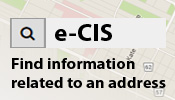Lane marking
Why are lane markings necessary?
The City of Winnipeg roadways are designed to be safe, and road markings are an important, but often overlooked, safety feature. Painted lines keep traffic in lanes and serve as guide posts for passing, safety, crosswalks and stopping areas. The Manual of Uniform Traffic Control Devices for Canada establishes the type of lines used and is used to ensure all traffic control devices, including paint lines, are consistent across Canada.
The City makes sure that road marking duties are carried out each year. The operation begins about mid-April, when it is warm enough for the paint to adhere to the road.
Did you know?
- One lane liner machine paints all major roadways in the City of Winnipeg, painting approximately 1,000 km (625 miles) of white and yellow lines, including edge markings.
- Of the 1,061 intersections painted, 560 are signalized intersections, while 121 are pedestrian corridors and 380 are crosswalks.
- It takes 8-10 weeks just to mark intersections.
- It takes 24 weeks to complete the lane marking process.
- Road marking equipment is owned and maintained by the City.
- You should slow down in work zones for the safety of workers.
Lane lining
- The lane liner machine:
- Holds 360 gallons of white paint, 140 gallons of yellow paint and 180 gallons of beads. One litre of paint covers 23 metres of lane line, 4 inches wide x 25 mil. thick.
- Paints 10 foot long lines within a 20 foot space. Each line is four inches wide.
- Is capable of painting two different colours (white and yellow), up to five lines at once, covering all lanes with glass beads that reflect head lights at night.
- Is operated by a three-man crew who communicate information via headsets. The driver keeps the machine going in a straight line, using mirrors and lining the pointer up with the curb or gutter line. The two operators in the cab, one on each side, operate the controls. One side of the control applies yellow and white paint and beads, while the other side applies white paint and beads at the same time.
- Has a spray gun that sits low toward the ground to avoid the splatter of paint.
- Yellow lane marking is applied to the extreme left to indicate there is opposing traffic.
- White lane marking is applied to differentiate the traveling lane from the shoulder.
- The lane liner crew paints approximately 1,000 kilometers of roadway each year.
- Lane lining service costs $178,000 per year, including labour, equipment and material.
- Lane lining costs are higher than intersection marking costs because there is more roadway to paint.
Intersection marking
- Intersection and crosswalk markings are done with a foreman and three two-man crews plus three small, walk-behind paint machines.
- Intersection marking activities begin the first week in May after street maintenance crews have cleaned along the curbs.
- Traffic control signs are placed in the area prior to beginning marking activities for safety purposes.
- Traffic control signs remain on the roadways for approximately 20 minutes after completing work to give the paint time to dry.
- Intersection crews typically mark 1,061 units.
The paint
- The paint is a quick dry alkyd that when is heated to 62 degrees Celcius (145 F).
- It dries in approximately 30 – 45 seconds.
- Line marking paint wears down quicker in the City than on highways due to the frequency of cars making lane changes. The harsh climate and use of rubber tires also contribute to wear.
- Rain helps to keep the paint looking clean.
Last update:
June 1, 2021

